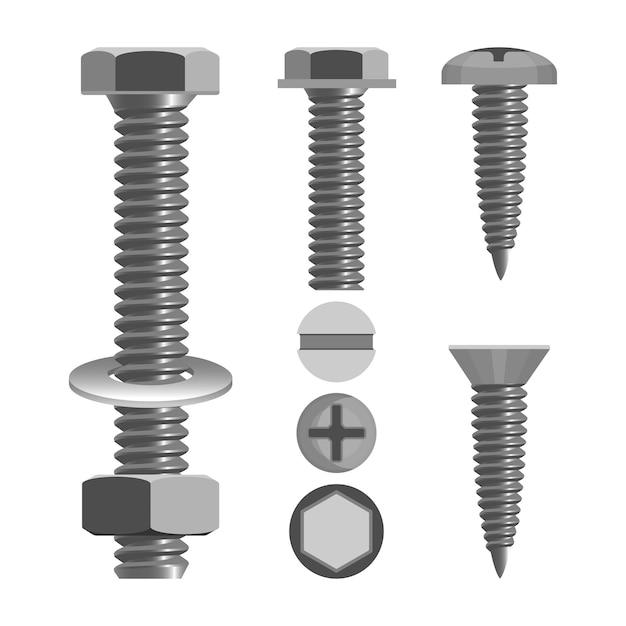Welcome to our blog post on how to determine if a screw-in fuse is blown. Whether you’re experiencing a power outage or trying to troubleshoot an electrical issue in your home, knowing how to identify a blown fuse is essential knowledge. In this comprehensive guide, we will provide you with easy-to-follow tips and techniques to help you quickly determine if a screw-in fuse is blown, even without a multimeter.
From understanding the signs of a blown fuse to learning how to check a fuse in a screw, we’ve got you covered. We’ll also address common questions like why fuses keep blowing in houses and when screw-in fuses were no longer used in homes. If you’re unsure about whether to replace a fuse or how to match the correct fuse when replacing it, we’ll clarify those concerns too. So, let’s dive in and become fuse-savvy!
Discover how to identify a blown fuse without a multimeter, learn about the safety of screw-in fuses, and much more in our comprehensive guide.
How to Determine if a Screw-In Fuse Has Blown
When it comes to electrical mishaps, few things can be as frustrating as a blown fuse. Whether it’s a power outage, a malfunctioning appliance, or a sudden shutdown, a blown fuse can throw a wrench in your day. But fear not! In this guide, we’ll show you how to play detective and determine if a screw-in fuse is blown, so you can get your electricity back on track. No magnifying glass or detective hat required!
Is It Dark Magic or a Blown Fuse
1. Check for a Power Outage
Before you start investigating your fuse box, make sure it’s not a neighborhood problem. Sometimes, the whole area can be blasted with a power outage, leaving you in the dark like Harry Potter with a broken wand. Check if your neighbors are also experiencing a loss of electricity. If they are, it’s not the fuse’s fault (unless fuses have mastered teleportation).
2. Analyze the Situation
If you’re the only one in the area with no electricity, it’s time to channel your inner Sherlock Holmes. Begin by checking which lights and appliances are affected. If one room is without power, while the rest of the house remains functional, it’s a good sign that you’ve got a blown fuse situation on your hands. Time to put on your detective hat!
Time to Play Fuse Detective
3. Locate the Fuse Box
The first step in solving the mystery is finding the scene of the crime. Most homes have a fuse box or circuit breaker panel, often lurking in the basement or a hidden corner. As inconspicuous as a secret doorway, your fuse box holds the secrets to your electrical power.
4. Prepare Your Tools
Just like any good detective, you’ll need a trusty set of tools. Grab a flashlight, a flathead screwdriver, and a steady hand. Be warned, though, tampering with fuses can be dangerous. If you’re unsure or uncomfortable, don’t hesitate to call a professional electrician to handle the gritty work.
5. Inspect the Fuses
With tools in hand, approach the fuse box with the confidence of a detective closing in on a suspect. Look for the row of screw-in fuses or circuit breakers. Each fuse has a glass window, displaying its inner workings. If the fuse wire appears intact and connects both ends, it’s not the culprit. But if you find a broken wire or the glass window is cloudy or blackened, congratulations, you’ve caught the blown fuse red-handed!
Solving the Mystery
6. Replace the Blown Fuse
Now that you’ve identified the blown fuse, it’s time to bring in the reserves. Unscrew the blown fuse, being careful not to damage the socket. Remember, we’re solving a mystery, not causing more trouble. Replace the blown fuse with a new one of the same rating. If you don’t have a spare on hand, it’s time to make a quick trip to the hardware store, but leave the detective hat at home this time.
7. Power Up Again
With the replacement fuse securely in place, it’s time to test your investigative skills. Slowly turn the power back on. If the lights flicker into action and the appliances begin to hum, congratulations! You’ve solved the mystery and saved the day! Your electrical power is now back and running smoothly, thanks to your detective prowess.
So, before you call the electric company in a panic or recount tales of dark magic, remember these simple steps for determining if a screw-in fuse is blown. By playing fuse detective, you can save time, money, and a headache-inducing electrical mishap. Now go forth, armed with your newfound knowledge, and keep the electrical gremlins at bay!
FAQ: How To Tell If A Screw In Fuse Is Blown
Welcome to our comprehensive FAQ guide on how to determine if a screw-in fuse is blown. Dealing with blown fuses can be a puzzling experience, but fear not! We’ve got you covered with answers to all your burning questions. Let’s dive right in!
How do I tell if a fuse is blown without a multimeter
If you don’t have a multimeter handy, fret not! There are a few simple ways to check if a screw-in fuse is blown. First, visually inspect the fuse for any signs of a broken filament or discoloration. Additionally, you can perform a continuity test by using a small test light or a simple circuit tester. Make sure to turn off the power before attempting any tests for your safety!
How can I determine if a fuse is blown in my house
Detecting a blown fuse in your house doesn’t have to be a daunting task. Start by locating the fuse box, usually found in the basement or utility room. Once you’ve located the box, carefully remove the suspected fuse and inspect it visually. Look for signs of a broken filament or discoloration. If you’re still unsure, try swapping the suspected fuse with a new one and see if that solves the issue.
How do I check a screw-in fuse
Checking a screw-in fuse is fairly straightforward. Begin by turning off the power to avoid any mishaps. Then, grasp the fuse and gently twist it counterclockwise to remove it from the socket. Inspect the fuse for any signs of a broken filament or discoloration. If you notice any damage, it’s a clear indication that the fuse is blown and needs to be replaced.
Why does my fuse keep blowing in my house
If you find yourself regularly dealing with blown fuses in your house, several factors could be at play. Common causes include overloaded circuits, faulty electrical appliances, or even a short circuit. It’s advisable to consult a licensed electrician to identify the root cause and ensure the electrical system in your home is functioning safely.
When did houses stop using fuses
Houses gradually transitioned from using fuses to circuit breakers during the 1960s and 1970s. The increased demand for electrical power coupled with the functionality and convenience of circuit breakers led to their widespread adoption. Nowadays, circuit breakers are the primary form of electrical protection in most modern homes.
How do I fix a blown fuse
Fixing a blown fuse is a relatively simple task. Start by identifying the blown fuse using the methods we mentioned earlier. Next, acquire a new fuse with the same ratings and specifications. Carefully insert the new fuse into the socket and firmly twist it clockwise to secure it in place. Once you’ve done that, restore the power, and you should be good to go!
How can I tell if a white fuse is blown
White fuses, also known as ceramic fuses, can be checked using the same methods as other types of fuses. Inspect the fuse for any visible signs of damage, such as a broken filament or discoloration. Additionally, you can use a continuity tester or a multimeter to confirm if the fuse is indeed blown.
Can a fuse be partially blown
Fuses can indeed develop partial damage, which can lead to intermittent electrical issues. These partial blows can be more challenging to detect visually and may require the use of a multimeter or continuity tester for accurate diagnosis. It’s crucial to replace any partially blown fuses to maintain a safe and reliable electrical system.
When did they stop using screw-in fuses
The usage of screw-in fuses gradually declined during the mid-20th century as circuit breakers gained popularity. However, some older homes and certain industrial settings may still have screw-in fuses in place. If you encounter a screw-in fuse, the same principles apply when testing and replacing them.
Are screw-in fuses safe
Screw-in fuses, when properly installed and maintained, can provide reliable electrical protection. However, it’s worth noting that these fuses may not offer the same level of convenience and safety features as modern circuit breakers. If you have concerns about the safety of your electrical system, consulting a licensed electrician is advisable.
When replacing a fuse, what must you match
When replacing a fuse, it’s essential to match its ratings and specifications. This includes the amperage (current rating) and the voltage. Using a fuse with incorrect ratings can compromise the protection of your electrical system and potentially cause further issues. Always ensure you have the correct replacement fuse on hand before making any replacements.
Are plug fuses still used
While the usage of plug fuses has significantly decreased, they may still be found in some older homes or specific electrical applications. However, most residential settings have transitioned to using circuit breakers as the primary method of electrical protection. Remember to consult a professional if you have specific concerns regarding plug fuses.
What are screw-in fuses called
Screw-in fuses are also known as Edison base fuses, as they were initially developed by Thomas Edison. These fuses feature a threaded metal base that screws into a socket for secure installation.
Should I replace my fuse box with a circuit breaker
Deciding to replace a fuse box with a circuit breaker is a personal choice that depends on various factors. Upgrading to a circuit breaker panel can offer increased safety, convenience, and flexibility for your electrical system. However, it’s best to consult with a licensed electrician to evaluate your specific situation.
How can I tell if a fuse is disconnected
To determine if a fuse is disconnected, visually inspect the fuse for any visible signs of disconnection. Look for a visible gap between the fuse and the socket or any signs of damage on the fuse itself. If you suspect a fuse is disconnected, remove it and test it using the methods we’ve described earlier.
Can I replace a 15-amp fuse with a 30-amp fuse
Absolutely not! It is crucial to NEVER replace a 15-amp fuse with a higher-rated 30-amp fuse. Fuses are designed to protect electrical circuits from excessive current flow, and using a higher amp fuse can lead to overloading the circuit, creating a serious fire hazard. Always use the proper amp rating for your specific electrical circuit.
That concludes our FAQ guide on determining if a screw-in fuse is blown. We hope this comprehensive information has shed some light on your fuse-related queries. Remember, safety should always be your top priority when dealing with electrical systems. If you’re uncertain or need further assistance, consulting a licensed electrician is your best course of action. Stay safe and stay powered!

